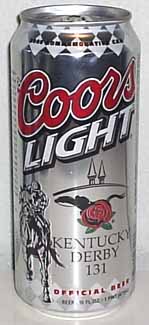
While most beer flaws have their places and style where they are allowable or even expected, a metallic taste is never favorable.Ī beer can pick up a metallic character from a variety of factors, primarily from exposure to unconditioned metal or poor ingredients. It also has a very low bitter note from hops that the light lager does not. Busch is sweeter than the light beer and slightly metallic.

Here is where the two beers diverge, if they were even up until now. When most beer drinkers try deciding on a beer, the flavor is a driving force. You really shouldn’t expect much.Īndy found Busch a little sweeter than Busch Light Neither beer was out of proportion to their style. Busch’s aroma yielded faint grainy notes but no hops and some minerality. On the other hand, Busch had a bit more going on. Busch light had a soft malt aroma, and the scent was almost entirely neutral – not really giving clues to any of its ingredients. While both beers looked similar, Busch Light was far cleaner smelling. Even with the lack of foam, these beers’ appearance is appropriate to the type, and any die-hard Busch fan will either A: not trouble themselves with the look of their beer or B: wouldn’t be pouring their beer into a glass anyway. I found that the head on Busch Light stuck around longer, likely due to the style of glass used with a more cylindrical design. Despite highly carbonated beers, any foam quickly dissipated, and all left on top of each beer was a wispy line of tiny bubbles clinging to the other edge. Each is very clear but offers nothing in the way of a foamy head. Busch beer is an excellent example of an adjunct American lager, while Busch Light fits nicely into the light beer sub-category.īoth beers are straw to yellow. Since then, the Busch brand has continued to market to outdoorsy, budget consumers with sponsorships with ducks unlimited and camo cans.īoth beers fall under the pale lager umbrella of mass-produced beers, like Bud Heavy and Bud Light. The innovation of light beer, keen to attract carb-cautious women consumers, was evident.

Logically, the Busch brand is meant to be a sub-premium brand of the company’s Budweiser.īusch Light followed in 1989 as a low-priced substitute for Bud Light. Ostensibly, the alpine references could be seen as an early attempt to compete with rival Coors, who had staked their claim in the mining town of Golden with its Rocky Mountain pure water and as a favored drink of gold miners. The brand recipe was tweaked in 1979, and the name was shortened to the Busch beer we know today with the tag “head for the Mountains.” The pale lager launched with the slogan, “Clear and bright as the Mountain Air.” It was the brewer’s first beer after Prohibition. Anheuser Busch Brewing Company introduced Busch Bavarian beer in 1955.


 0 kommentar(er)
0 kommentar(er)
